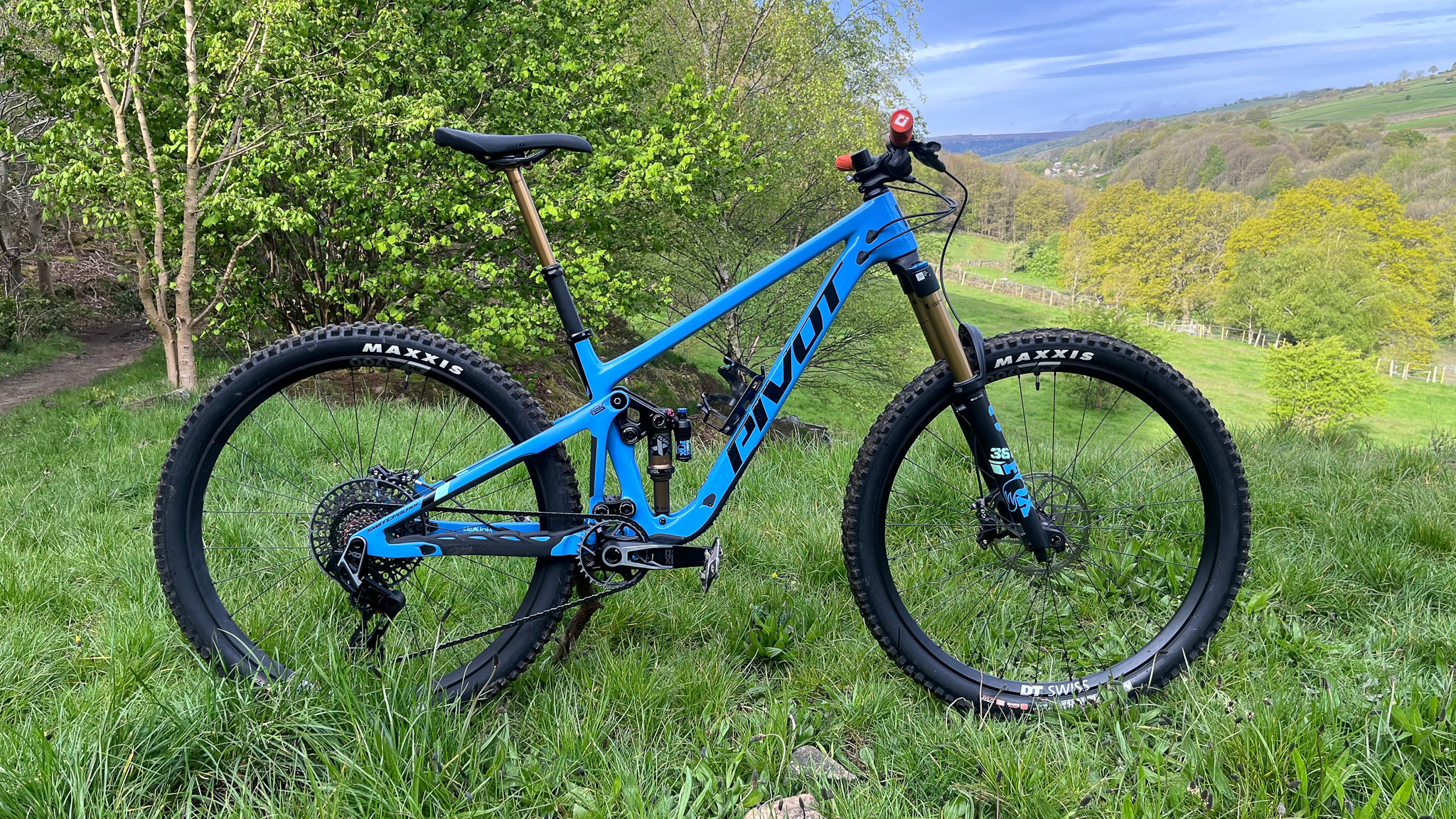
Pivot has been around for a long time - main man Chris Cocalis started with early innovators Titus and set up Pivot in 2007 - and it has have always been at the front end of the crowded high-end off-road market. It currently offers four mountain bikes in its full-suspension 29er range. The Switchblade, with its 142mm of rear wheel travel, is the trail and light enduro option and sits between the shorter-travel Mach 4 SL and Trail 429 platforms and the hard-hitting 165mm Firebird big mountain enduro beast.
Pivot suggested that the Switchblade it could “Do everything, and do it better” when it was launched earlier this year as part of the brand's 35th anniversary, which is a bold claim. Pivot says the Switchblade has the pedaling response and agility of the Trail 429 but with the big terrain suspension and handling characteristics of its Firebird, which means it has a lot to live up to as both have proven to be great bikes in their own right. So, does the Switchblade live up to the hype and has Pivot possibly created one of the best trail mountain bikes out there?
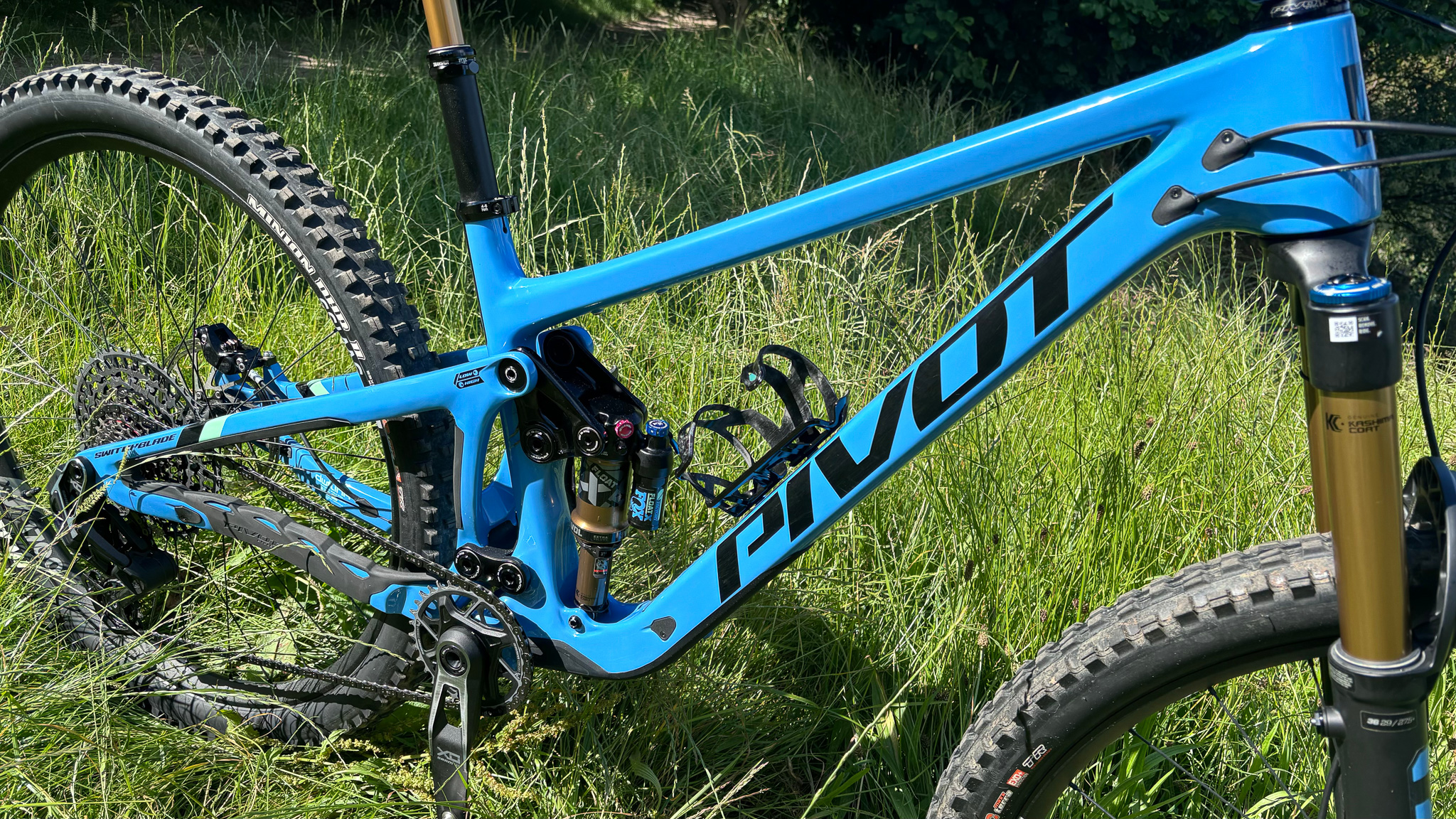
Design and features
The 2024 Switchblade Pro has an identical silhouette to the Switchblade Team XTR tested by Guy Kesteven back in 2020, and it is still a great-looking bike with clean lines, boxy tube profiles, and a low-slung stance. All the changes in this new version have to do with geometry, sizing, and rear suspension kinematics.
No internal storage solutions or odd proprietary bottles are to be found here either, though there is an external storage option developed with Topeak called the Phoenix dock that can be bolted on the underside of the downtube near the bottom bracket or below the top tube just above the linkage.
The lack of frame storage has meant Pivot has kept the tube profiles relatively svelte, which I think helps with the clean aesthetic. The tubes have a square profile with rounded edges that, from a distance, look straightforward, but on closer inspection, reveal lots of changes in profile and shaping, especially around the bottom bracket and seat tubes. The slim but purposeful design fits nicely with the vibes I got from riding it. It's no skinny XC whippet, nor is it a full-fat enduro bruiser, it lies somewhere in the middle of that and somehow just looks right for the task in mind.
The two rotating links that make the DW link suspension platform attach the one-piece back end. All bearings are mounted in the alloy linkages instead of the carbon sections, which bodes well for the frame's longevity. At some point in time, you will need to replace the suspension bearings and removing and refitting into alloy instead of carbon is a safer option. There is also a ten-year warranty on the frame to back this up, which gives you some peace of mind, though I'd rather have a lifetime option at this price. There are also some neatly done rubberized protection sections on the chainstay with a raised profile that not only prevents scratching but also minimizes chain slap noise.
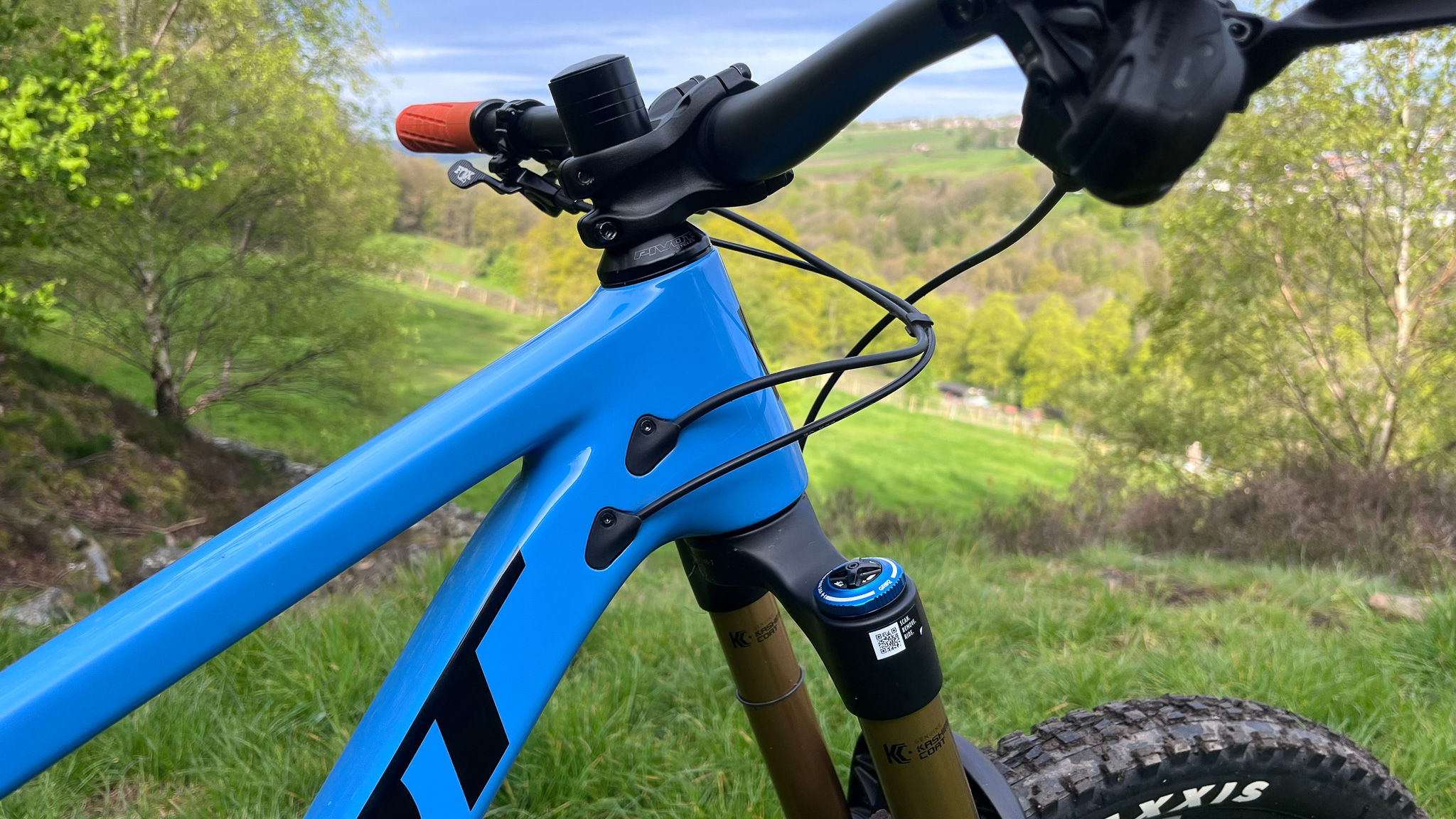
Due to the seat tube-mounted shock placement, there's only space for one bottle. A standard one works fine, but I found the side-mounted Elite Prism I reviewed previously worked best for carrying larger bottles for longer rides on the medium frame I rode. This was due to the low-slung top tube, which does limit space, so using a side-loaded option is less of a faff, but it's a worthwhile trade-off as the compact front triangle gives you lots of flexibility in dropper choice and the ability to size up if you prefer a longer reach without being hampered by seat tube heights.
The medium version has a 180mm Fox Factory Transfer post fitted as standard, with XS and Small frames getting 125 mm and 150mm versions and the Large and XL running 200mm. The length was adequate, though I think they have played it a bit conservatively. They could easily go up a size on at least the mediums and upwards, as the low top tube gives plenty of room and would make sizing up or down to get your desired reach easier.
The frame has also carried over its neat clamped cable routing from the original, so you can run whatever drivetrain and braking setup you like. There's no headset cable routing here, which should keep the mechanics amongst us happy, too. I had the rather lovely Blue Neptune color option on test, though it's also available in a Pink Neon throwback to the brand's first bike and Stealth Mojave, or Black to you and me.
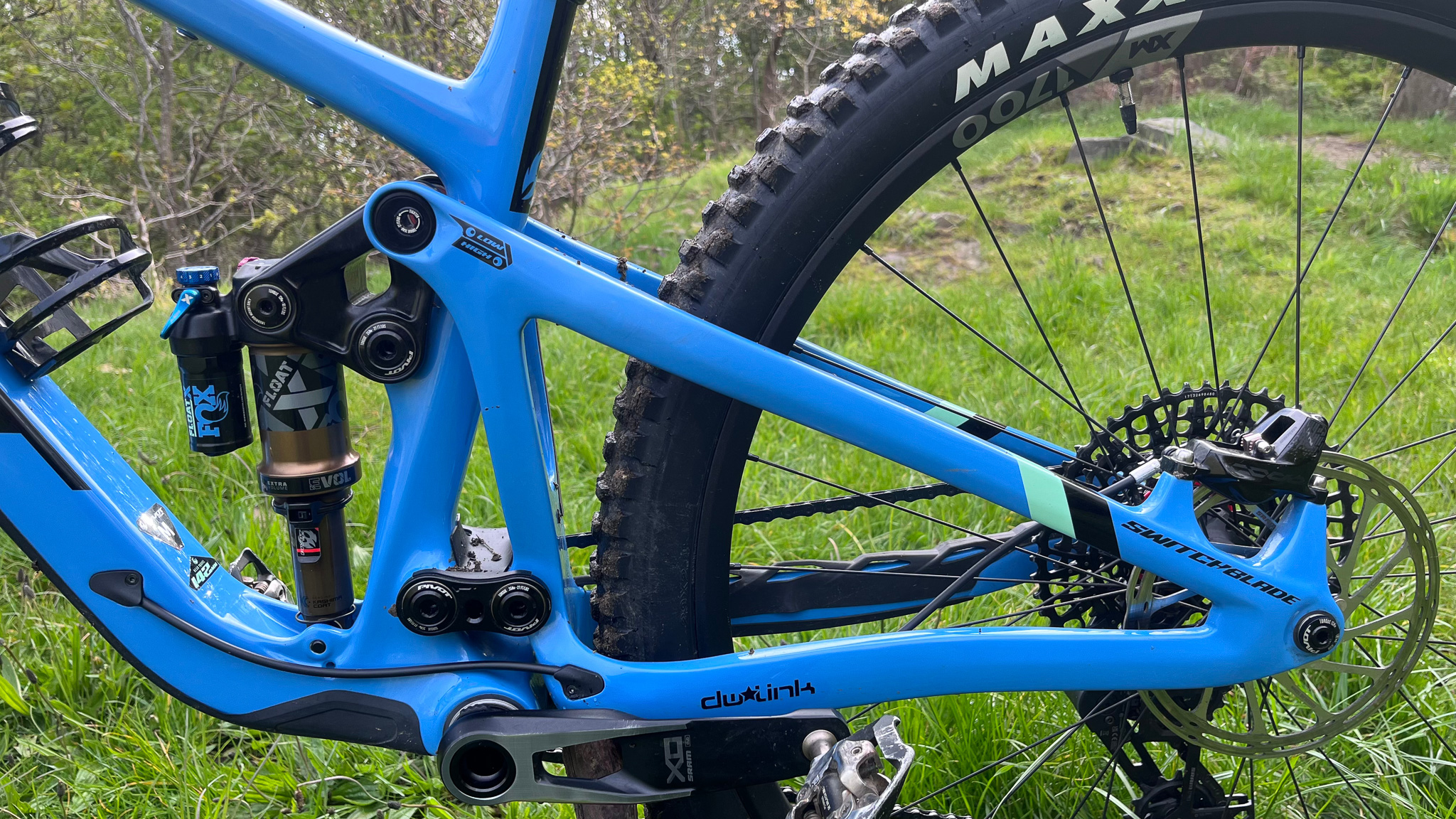
Geometry
The latest Switchblade has had changes to both sizing and geometry, with only small but effective changes in both, like the headtube being 0.5 degrees slacker and the seat tube being 1 degree steeper. I mainly rode it in the low setting, which gave me a 65.2-degree head angle and a 76-degree effective seat angle, which is neither super slack nor steep but does work well for the riding it's designed for.
It comes in five sizes, with the reach increasing by 10mm over the previous generation, which gave the medium I tested 470mm, which, combined with the 780m wide bar and 45mm, felt perfect for me. It's worth mentioning, too, that Pivot specs different width handlebars depending on size, which sounds good, though I'd prefer to have an 800mm bar as standard and cut it down to where I liked it.
There are size-specific rear triangles on some of the sizes, too, though the differences between them are hardly major. There is only a 5mm difference between the XS to medium frames, at 431mm, and the XL, which tops out at 436mm. Again, these are not huge differences and certainly nothing extreme, but they are in keeping with the rest of the package.

DW what?
All of Pivot’s full-suspension bikes use the well-established DW link for the rear suspension. This system, used under license from engineer Dave Weagle (hence the DW), was first used by three-time UCI Downhill World Champ Sam Hill in his all-conquering Iron Horse days and is also used by other high-end brands such as Atherton and Ibis in various forms.
The swingarm is a solid rear triangle connected to the frame using two short links that can be altered to change the suspension kinematics, though most DW bikes tend to have a familiar feel to them. I've been a long-time DW link fan, having owned several bikes with the platform in the past, from several Iron Horses back in the day to more modern Ibis Mojos.
I love how the bike sits into its travel with tonnes of grip but enough pop and playfulness to keep it fun and engaging. This latest version of the Switchblade gets a longer bottom link which is something carried over from the Firebird enduro bike and is there to help the bike deal with speed-robbing square edge hits better.
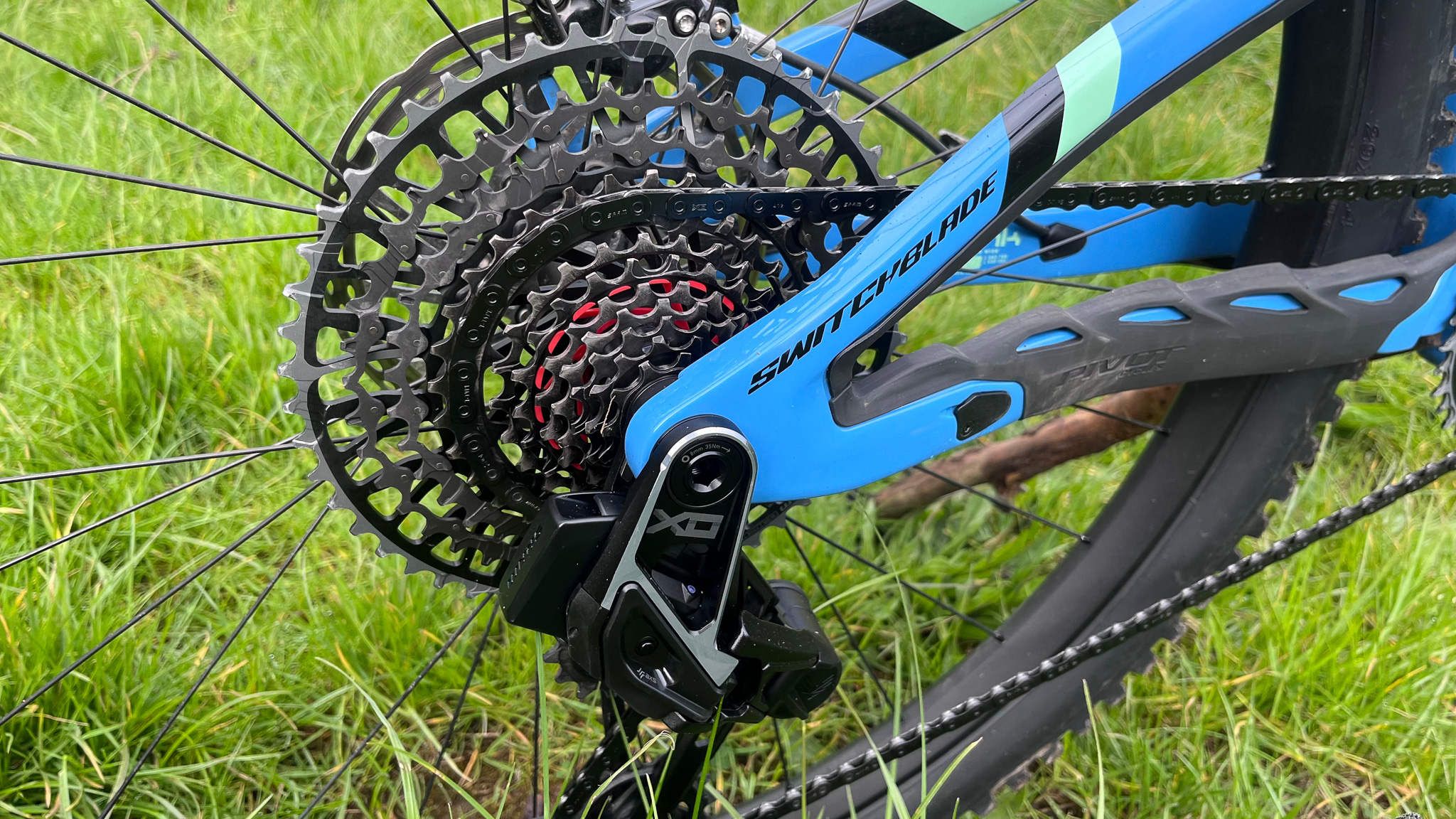
Components, pricing, and build
The Switchblade's spec is high-end, as you'd expect given its eye-watering retail price of $8699/£9100, but it's not a list of top-of-the-range parts throughout. Suspension is suitably fancy, with a 160mm Fox factory 36 upfront with its excellent grip X-2 damper and a Factory Float-X rear shock with a handy sag meter that zip ties to the main shock body, making set up easier. Both fork and shock come with the Kashima coating to match the Factory Transfer dropper post, though it's the previous generation and not the latest longer version.
The drivetrain is handled by SRAM XO AXS T-Type transmission, which gives faultless, if a little slow shifting, whatever you try to do. To me, it felt a little too sluggish to begin with, but you quickly get used to it always working regardless of how sloppy or poorly timed your gear changes may be.
Unfortunately, my test bike came with the Matchmaker mounted shifter, which no matter how I adjusted, I struggled to get in a perfect position. I have recently used the separate clamp version on another test bike and found that much better, letting me get the pod closer to my thumb and away from the grip, so bear that in mind if you don't get on with the stock setup.
The crankset is the alloy SRAM XO DUB, which comes with 170mm crank arms and a 32-tooth chainring. When paired with the 10-52t cassette, it gave me all the gearing range I needed. Pivot still goes with the press-fit bottom bracket on the Switchblade, but I'd much rather see a threaded system like a standard BSA or T47 for easier future maintenance. That said, I had zero issues with bearing wear or noise from the bike throughout testing despite months of less-than-perfect weather.
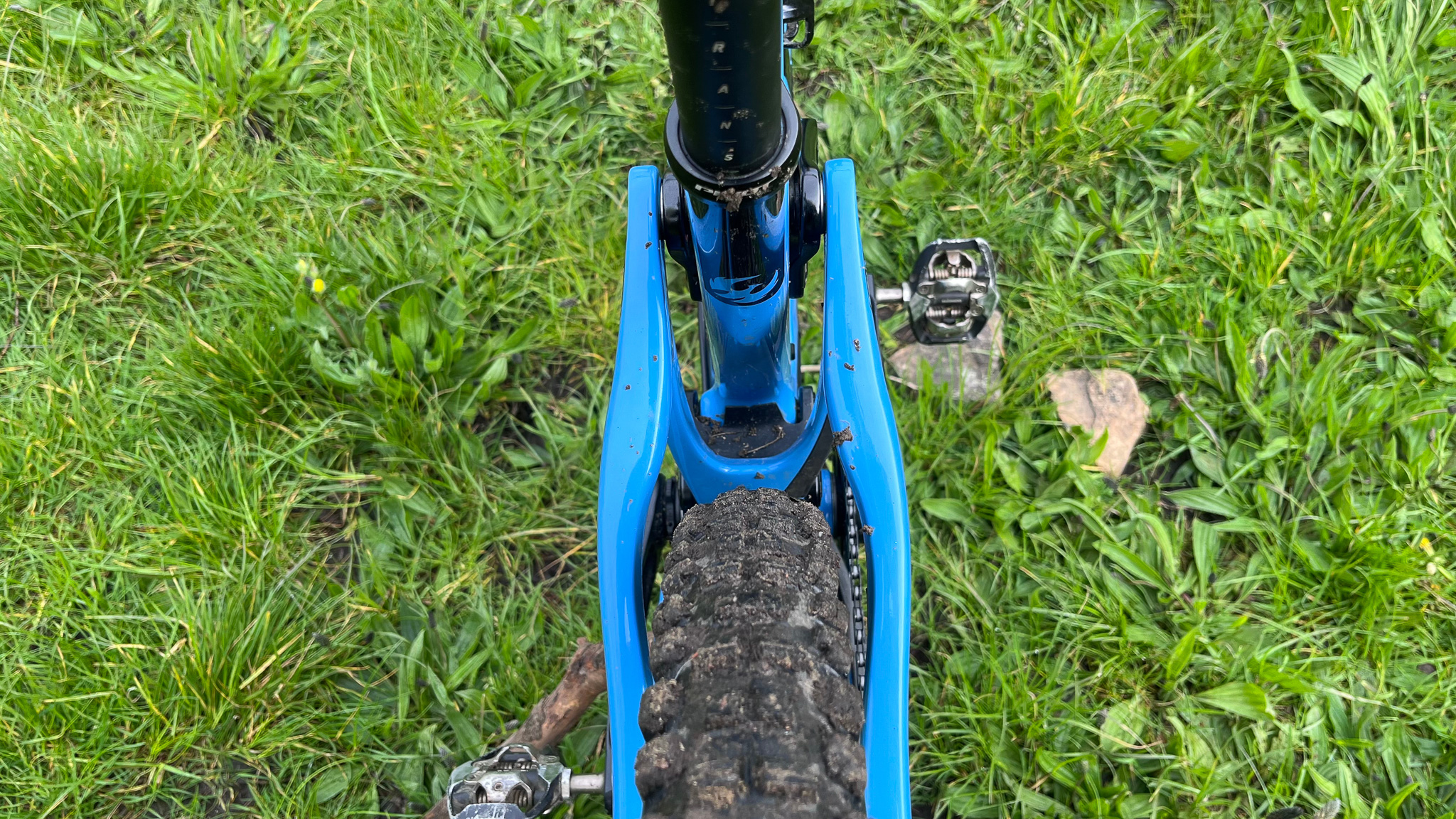
The brakes are also from SRAM, though they are the previous generation Code RSC and not the latest stealth lever style. Functionally, they were fine with fitted 200 and 180mm rotors, though I'd rather have the latest stealth style as they are more aesthetically pleasing to me and offer a handy central position for your hands on long tarmac or fire road climbs.
The wheels are the smooth riding and solidly reliable DT Swiss XM1700, which are a great wheelset but a little on the portly side at nearly 2kg a pair, especially on a bike with such a high price point. A carbon wheel upgrade is available in the US but costs an extra $1200. The frame also uses the Super Boost standard, which uses a 157mm wide axle on the rear as opposed to the standard 148, which can limit your choices a bit should you wish to upgrade at a later date.
The tires are the ever-dependable Maxxis Minion DHFII and DHRII in a 2.4 width. With their Max Terra compound and Exo+ casing, they are a solid and dependably grippy setup, though they do feel a little clumsy compared to a nimbler option like the Schwalbe Tacky Chan I reviewed earlier this year. When paired with the relatively heavy wheels, they hide some of the performance and speed on climbs.
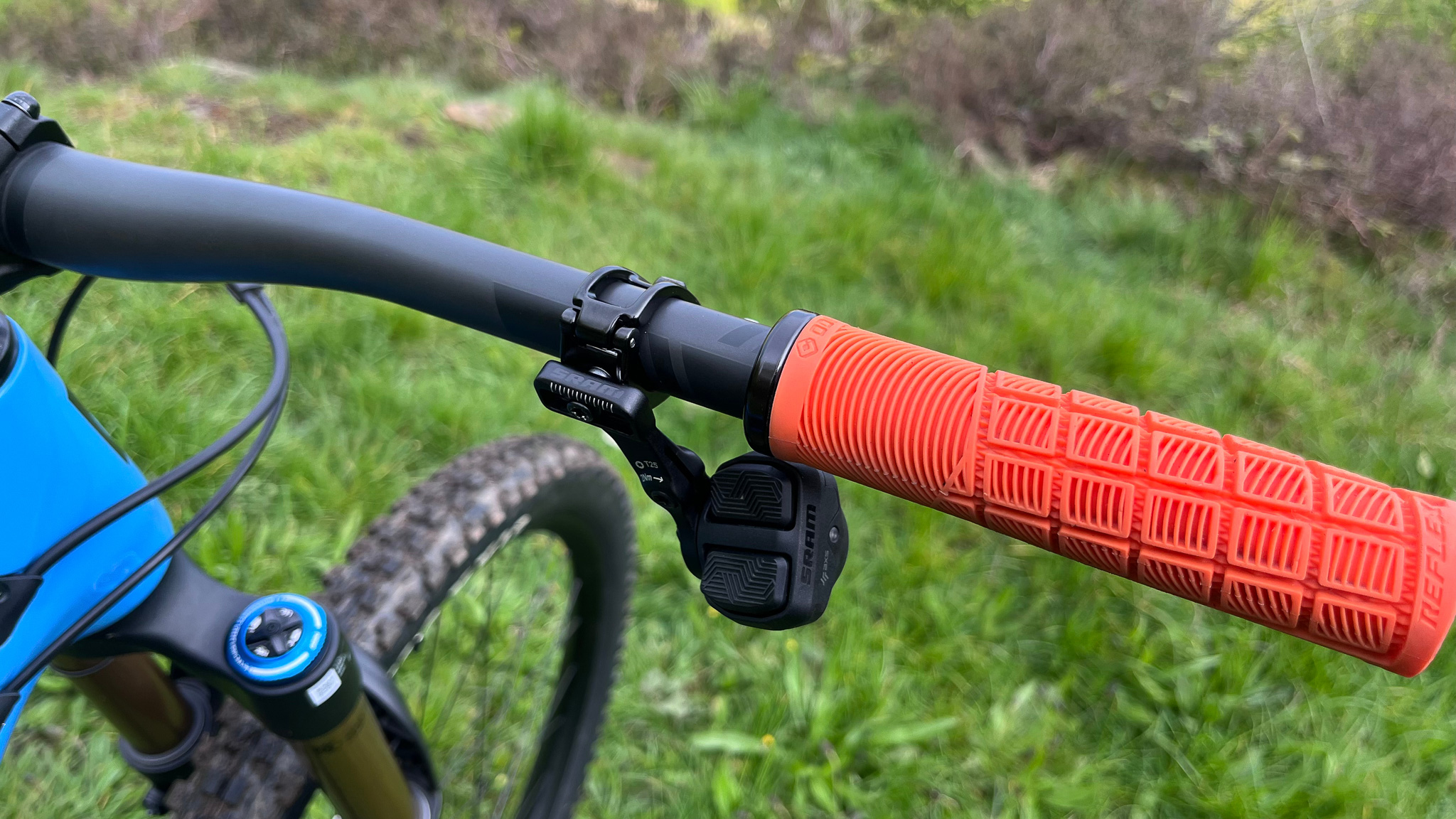
Ride, handling and performance
The first thing I noticed when I hopped on was how right the geometry felt for me. The reach figure of 470mm, combined with the 780mm bars and 45mm stem, was as close to perfect for me as a trail bike could be. It was long enough to be comfortable for extended pedaling without feeling too stretched and controllable enough to push on more technical sections. The seat angle isn't as steep as lots of its contemporaries at 76 degrees, which some may not like on really steep tech climbs, but for me, it meant I could get in a really comfortable pedaling position with a wider hip angle close to that of my gravel or XC bikes which I much prefer for longer rides.
Most of the DW link bikes I have ridden in the past tended to be longer travel gravity-based sleds, so I was keen to see how the latest incarnation worked on a more pedal-friendly platform, and I was not disappointed. The short linkages naturally stiffen up slightly under pedal loads, which really helps on climbs. It's no XC race bike, which is hardly a surprise with its relatively heavy wheels and tires, but it is a lot more responsive than its weight of 13.9kg /30.64lbs would have you think. There is a little bit of movement when seated on climbs, but it's only really noticeable on smooth sections, and there is a lockout on the rear shock for prolonged road and fire road sections should it bother you.
It has a real fluid feel on the trail, not the bottomless travel cliche, but a composed dynamic ride with plenty of grip that responds well to rider inputs. It's very supple at the start of the travel, with plenty of support in the mid-stroke sweet spot. The shock comes supplied with both a blue and orange spacer fitted, which, after a bit of fettling, I stuck with through the test as they gave me a great mix of early travel grip and plenty of support through the shock stroke to give it a poppy, playful feel when you wanted it. It still retains that unmistakable DW link feel of being easy to handle with tonnes of grip and still having plenty of feedback when you push it into corners or compressions and felt fun on a wide range of trail conditions.
With its relatively conservative geometry, it's no enduro monster and may even look a bit boring on paper, but it's more than capable on technical terrain. It felt far more composed on the rough stuff than you'd expect it to with its 65.2-degree head angle. A lot of that is down to the longer travel 160mm Fox 36 forks plugged into the front, the extra travel working well and feeling very balanced with the shorter 142mm available at the rear. To be honest, it's quite hard to pin down exactly where the Switchblade excels most. It's very good in pretty much all serious terrain, which I guess is exactly how a trail bike should be.
I struggled to find a trail it wasn't fun on, which is a testament to how sorted this bike really is. Whether scaring myself on some of Sheffield's finest steep trails, wide open moorland singletrack, or visits to Welsh trail centers, it felt like the right bike for whatever I was doing. And it was a tonne of fun in the process.
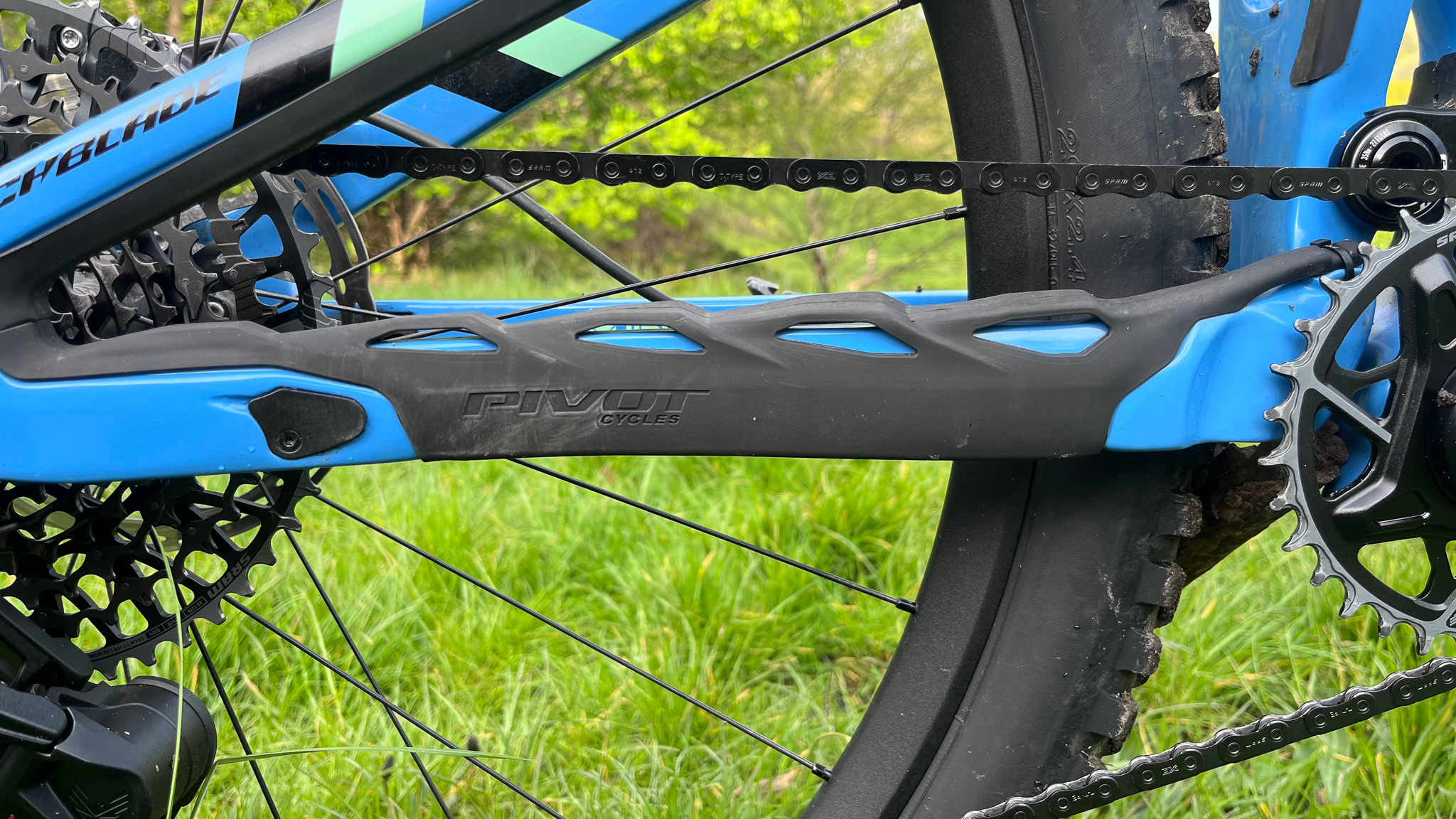
Verdict
Yes, it's expensive, but the Switchblade has been one of the most fun and capable trail bikes I've ever ridden. There are plenty of cheaper options out there that are more than up to the job, but the subtle geo changes and development of suspension kinematics have helped move this bike from the good bike category into the superbike category for me.
It'll never win a spec list top trumps battle, but I think that's missing the point with this bike. It's a well-sorted, wonderfully intuitive, and fun trail weapon that is seriously capable without being a dull, lifeless ride like some super long and slack bikes can be.
It's been my go-to bike whilst I've had it on test, as it always puts a smile on my face, so if you can afford it, it's certainly a bike that should be on your radar.
Test conditions
- Surface: Local Peak District grit rock, sand, rooty loam-filled woodland, and more mud than I would have liked
- Trails: Natural Enduro courses, moorland singletrack, red and black grade trail center runs, and off-piste play trails
- Weather: Plenty of wet and inclement rides but also lots of dry (ish) trail rides, too
Tech specs: Pivot Switchblade Pro AXS
- Discipline: Trail
- Price: $8699 / £8,999
- Head angle: 65.7/65.2 degrees
- Frame material: Carbon
- Size: XS, S, M (tested), L, XL
- Weight: 13.9kg/ 30.64lbs
- Wheel size: 29in
- Fork: FOX FACTORY 36 GRIP 2/160mm travel
- Chainset: SRAM XO 170mm arms with 32T chainring and DUB bottom bracket.
- Rear mech: SRAM Eagle AXS XO, T-Type
- Shifter: SRAM Eagle AXS Pod Controller
- Cassette: SRAM Eagle XO CS-1275 12-speed 10-52T
- Brakes: SRAM Code RSC 4 piston hydraulic disc brakes with 200/180mm rotors
- Tires: Maxxis Minion DHF EXO 29x2.5in front and Maxxis Minion DHR II EXO 29x2.4in rear
- Wheels: DT Swiss XM1700
- Bars: Pivot Carbon 780 x 35mm
- Stem: Pivot Phoenix Team Enduro 45mm
- Grips: Pivot Phoenix Factory lock-on
- Seat post: Fox Transfer 180mm stroke, 31.6mm diameter
- Saddle: WTB Volt Pro (Medium width) with Carbon rails







